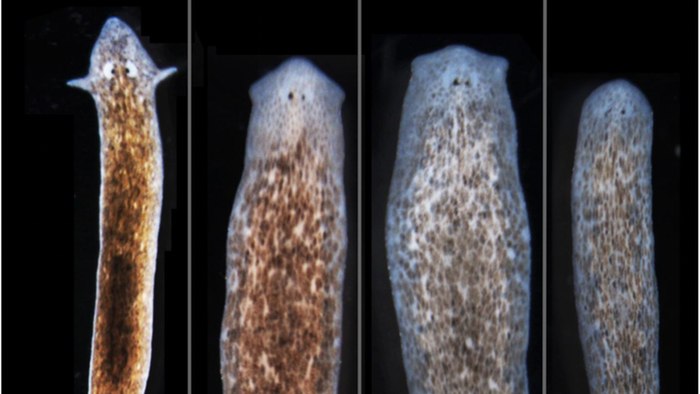A new research project at Tufts University in Massachusetts has
seen biologists successfully induce flatworms of a specific species
to grow the head and brain you'd expect to find on another species.
Not only does the breakthrough add to our understanding of exactly
what governs the growth of anatomy, but the knowledge gained may
also have practical uses down the line, helping us better understand
and even fix birth defects.
For the study, the researchers worked with flatworms known as Girardia dorotocephala – a species with advanced regenerative capabilities, including the ability to regrow missing parts of their anatomy. Exploiting this trait, the scientists attempted to alter the physical attributes of the creatures – specifically the morphology of their heads – by interrupting protein channels between cells, which are used to pass information back and forth via electrical signals.
The results were extremely pronounced, with not only the outer appearance of the creature's head changing after the testing, but also the actual shape of the brain and the distribution of the worms' stem cells. The researchers found that the closer the target species was to the Girardia dorotocephala used for testing, the easier it was to induce the change.
So, what does all that actually mean? Well, the most important finding is that the characteristics of anatomy are not hard-wired by the genome, but can be affected by bioelectrical networks between cells. The fact that the closer two species are on the evolutionary timeline directly effects the ease of the transformation also suggests that long-term changes in physiological circuits play a key part in the wider evolutionary process.
Interestingly, the physical changes were found to be only temporary. Once the worms began regenerating again after some weeks, they reverted to their original, natural head morphology. Further research will be required to find out exactly why this is, but the study as a whole could have some big implications down the line, providing insights that could help doctors fix birth defects or improve healing after an injury.
"This kind of information will be crucial for advances in regenerative medicine, as well as a better understanding of evolutionary biology," says study lead author Maya Emmons-Bell.
The findings of the study, including a computational model that explains exactly how the disruption of cell-to-cell communications leads to the altered anatomy, were recently published in the International Journal of Molecular Sciences.
Source: Tufts University
